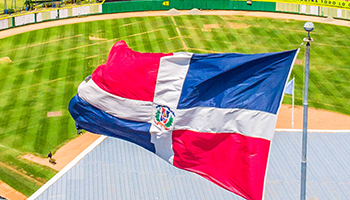Environment Ministry Will Remove More Than 150 Wild Donkeys from Cabritos Island
 | Environment Ministry Will Remove More Than 150 Wild Donkeys from Cabritos Island The Ministry of Environment and Natural Resources announced a plan to remove more than a hundred wild donkeys from Cabritos Island as they are threatening the biodiversity and scenic beauty of the protected area, which belongs to the Lake Enriquillo National Park. The operation to remove the animals is being coordinated by the Office of Biodiversity and Wildlife under the deputy ministry of Protected Areas and Biodiversity as part of the project known as “Mitigating the Threat of Invading Exotic Species in the Insular Caribbean,” which is being implemented with funds from the United Nations Environmental Program (UNEP) through the Global Environment Fund (GEF). The Ministry of Environment calculates that between 100 and 150 donkeys were introduced on the island illegally by individuals and are interfering with the island’s conservation, preservation and development of the iguanas and crocodiles in the area as well as other native and endemic species that inhabit Cabritos Island. The operation to remove the animals is being coordinated by the Office of Biodiversity and Wildlife under the deputy ministry of Protected Areas and Biodiversity as part of the project known as “Mitigating the Threat of Invading Exotic Species in the Insular Caribbean,” which is being implemented with funds from the United Nations Environmental Program (UNEP) through the Global Environment Fund (GEF). This removal task will take place between January 15 and 30, 2012. Once the job is completed, the Jaragua Group will be in charge of future monitoring and follow-up. The purpose of the removal of the donkeys is to recuperate the natural habitat of the island’s iguanas (Ricord and Rhinoceros Iguanas) and to protect the nesting areas of the island’s crocodiles which are being altered and destroyed by the presence of so many donkeys, said Carlos Rijo, coordinator of the project. “The presence of these animals on the island not only alters nesting places for the reptiles but also their presence in such a vulnerable ecosystem is a threat to the flora whose composition of grain, cacti and prickly thicket is already vulnerable and could ultimately lead to the disappearance of some species of global importance,” said Rijo. The donkeys consume the different species of grain and cactus for nourishment and water which in turn alters the food consumption of iguanas which is basically the fruit from these plants. Another problem caused by donkeys is the holes they dig in the sandy areas near the water sources to get to the salt to eat it which destroys the nesting spots for the island´s animals. While there is a great deal of conjecture about how the donkeys got to Cabritos Island, said Rijo, the most popular explanation is that over a prolonged period of drought, the island became a peninsula through the formation of a “land bridge” to the extreme west and this enabled all types of animals, not just donkeys, to come onto the island. The last prolonged drought on the island occurred in 2006. Before the island was declared a National Park in 1974, cattle ranchers from the area used it as a private farm for breeding different animals. Later on when the Island was included as part of the Enriquillo Lake National Park and Cabritos Island, the ranchers moved out but left some of their animals behind on the island including the donkeys whose current population is around 150, according to studies. The Removal Process As part of the removal process, a pasture area was prepared on the island, making sure to avoid any harm to the donkeys. The donkeys will be led to this pasture area by experienced people. Once they are herded together, they will be confined into small groups of 4 to 10 in individual corals. As a way of guaranteeing the safety of the donkeys, they will be given sedatives to keep them calm which will allow them to be transported in specially-built boats to the community of La Descubierta. Once in La Descubierta, they will be distributed to a group of farmers who have participated in their capture and removal from the island. This removal method was designed by the National Committee on Exotic Invasive Species following a long process of consideration about the donkeys’ well-being and their final destination. This methodology was later introduced among the nearby communities of La Descubierta, Boca de Cachón and Bartolomé. This process has enabled the integration of the local organizations into the process, principally the Association of Ranchers and the Association of Ecotourism Guides of Enriquillo Lake. Investment The investment earmarked for this activity is 2,772,134 pesos, equivalent to $72,000 dollars. These resources will be provided as follows: the United Nations Environmental Program, $44,956; the Ministry of Environment, $14,900 and the Jaragua Group, $12,147. | |

Related News
-

(Versión en español) AGN invita al segundo seminario de Sistema Integrado de Gestión de Bibliotecas
-

(Versión en español) Cultura presenta la exposición ‘LeSanz in memoriam’ en la Galería Ramón Oviedo
-

(Versión en español) Cultura reconoce la trayectoria de Freddy Ginebra en el 50 aniversario de Casa de Teatro
-

(Versión en español) El Archivo General de la Nación logra mayor índice de satisfacción en encuesta SISMAP 2024
-

Dominicanos en Grandes Ligas
Las ultimas noticias/novedades de lo que acontece con los Dominicanos en las Grandes Ligas durante toda la temporada 2019.



